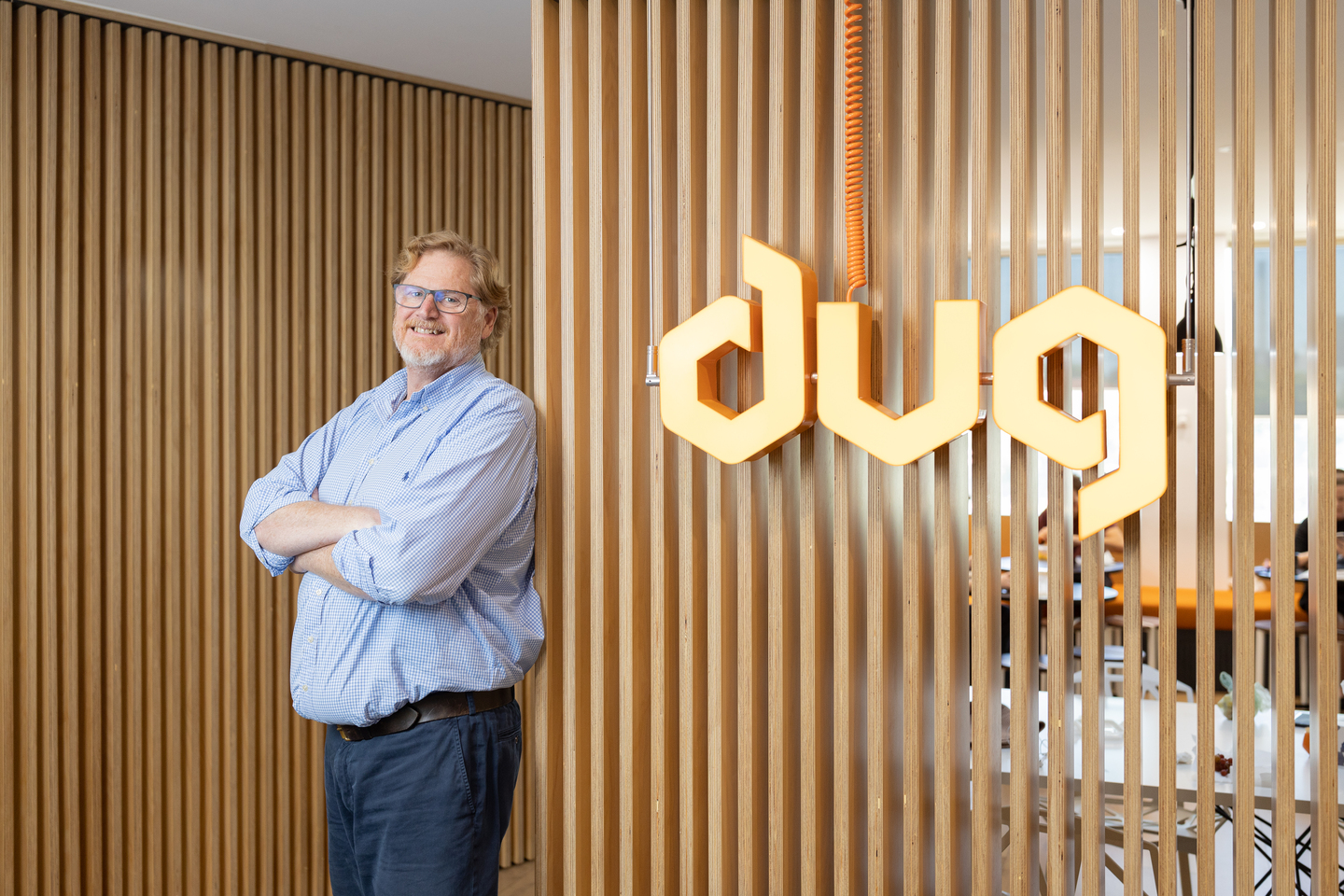Limitless WA: With a market capitalisation of around $100 million, DUG Technology has grown from a backyard operation to now planning a huge supercomputer in the Mid West.


Years before DUG Technology was sharpening plans for a supercomputer near Geraldton, it was flickering to life in a backyard shed in Subiaco.
Now an ASX-listed big data business with big ambitions, DUG was co-founded by Matthew Lamont and (then) PhD student Troy Thompson.
Initially known as DownUnder Geosolutions, DUG was inspired by Dr Lamont’s work in the US, after he identified a gap in Australia’s geoscience technology market.
The founders worked with 40 computing nodes and wrote numerical codes in the shed.
Their sweat equity delivered a win three years later, in 2006, when the business contributed to its first oil and gas discovery, at Julimar.

Matt Lamont in 2020. Photo: Gabriel Oliveira
Offices in Houston, London and Kuala Lumpur followed, as did technology patents using immersion of supercomputers in cooling oil to improve processing efficiency.
But while the two founders had worked hard to develop rapidly, the biggest obstacle was beyond their control.
The oil price dropped 70 per cent from mid-2014 to 2016, hitting lows below $US40 per barrel.
For a business built on providing data services to oil and gas, it was a substantial setback.
“Oil and gas is a very tertiary business, so we had really good times in the early years when we didn’t have all our technology offerings as complete as they are today,” Dr Lamont said.
“Then in 2015, we had the big oil price slump and so it has been difficult through those periods when we’ve had to think about how to keep growing, how to twist and turn and find a way to compete really well.
“It has been tough, at times.
“It does test our beliefs to the very core of ourselves and what we can achieve.”

Those difficult years led the company to diversify, and more recent work has been with defence contractor Austal and the Harry Perkins Institute of Medical Research, in addition to working with the International Centre for Radio Astronomy Research.
DUG processed about 200 terabytes of data from the Murchison Widefield Array radio telescope, and its engineers optimised processing algorithms for the data.
The company is also currently working with astronomers associated with the international Square Kilometre Array radio telescope, to be built in the Murchison, and hopes to continue as the project progresses.
DUG is planning a large supercomputer near Geraldton, with a capacity of 200 petaflops, which is much larger than the company’s 23-petaflop computer in Kings Park.
A 200-petaflop computer would be able to undertake 200 quadrillion floating-point operations every second, a level that was world-leading only three years ago.
It is equivalent to about 20,000 PlayStation 5 consoles.
Longer term, the facility might be scaled up further to an exaflop, equal to 1,000 petaflops.
It will be powered by renewables, and the company is developing hydrogen batteries for storage purposes.
“High-performance computing is a huge user of energy,” Dr Lamont said.
“The high-performance computers in America use more power than the UK does in total.”
It was important to be part of the solution, he said.
“Our clients are scientists for the most part and scientists are all very cognisant of their carbon footprint and wish to have a solution for it,” Dr Lamont said.
“That’s what we’re providing there.”
Greener computing was a tremendous opportunity, he said.
“[In] Geraldton, we’ve got world-class renewables up there in terms of sun and wind,” Dr Lamont said.
“There’s only about an average of six hours a day when you don’t have sun or wind power generation.
“So, we’re sitting on a tremendous resource and that just creates a huge business opportunity right there.
“That’s what we’re working on.”

High performance
DUG listed on the ASX in August 2020, raising $26 million; a move Dr Lamont said he could never have anticipated when he founded the company nearly two decades ago.
“For a long time, it was just about growing research and development to get to a size that allowed us to compete with the big global players in the marketplace,” he said.
“And to grow R&D we needed to have the revenue, otherwise we would always be a little bit of a niche player, and that’s what drove us for a long time.”
Dr Lamont said there was a wave of change under way in the high-performance computing world.
Traditionally, most high-performance computers were in universities and other institutions, mandated by governments.
The Pawsey Supercomputing Centre in Perth is one such example.
But private operators such as DUG are now entering the field, albeit more so in the US and UK.
“What we’re seeing now and what we’ve seen over the last ten years is a change of precedent around the world where there’s now commercial providers of high-performance computing,” Dr Lamont told Business News.
“We’re one of those; we’re one (of few), if not the only one, in Australia.”
















